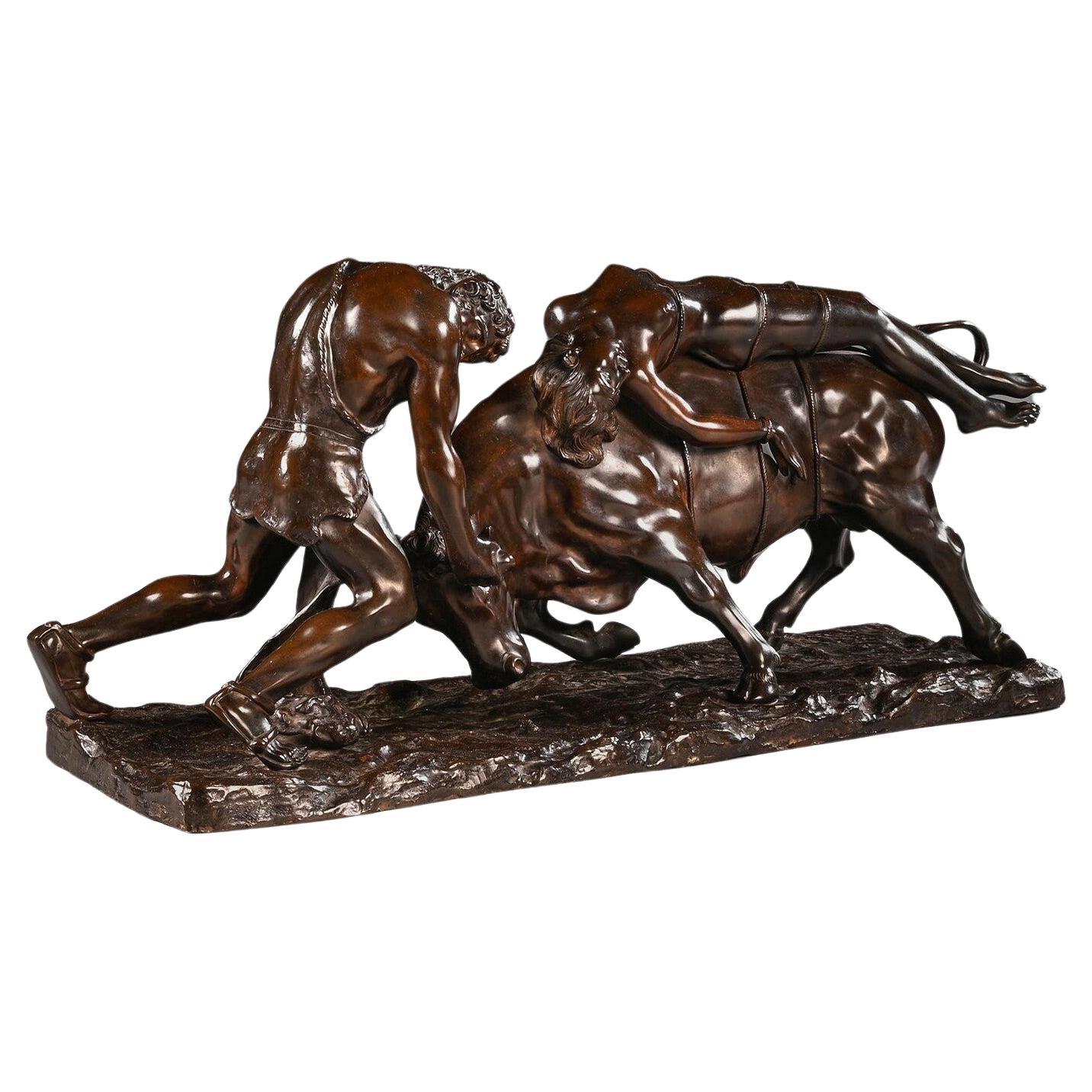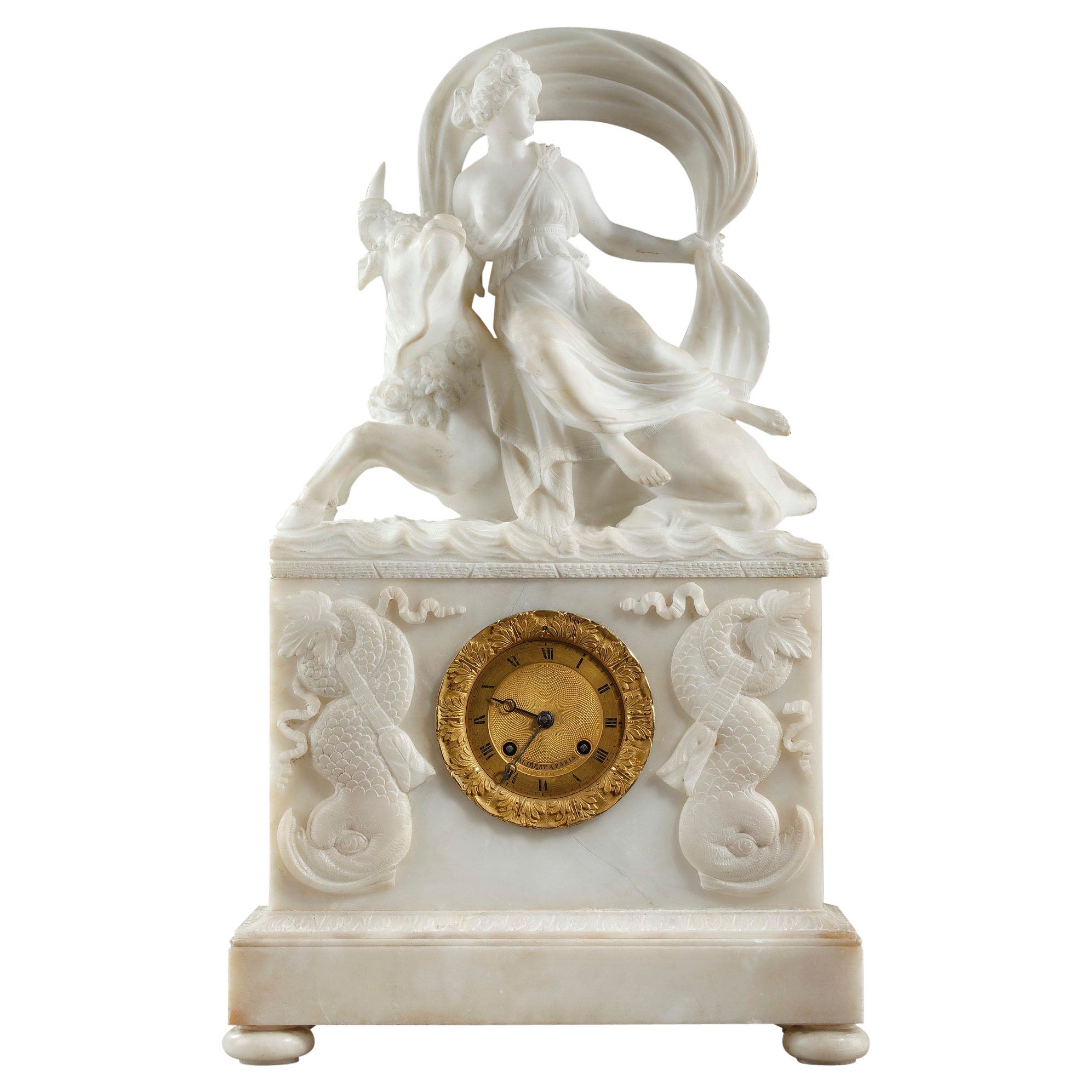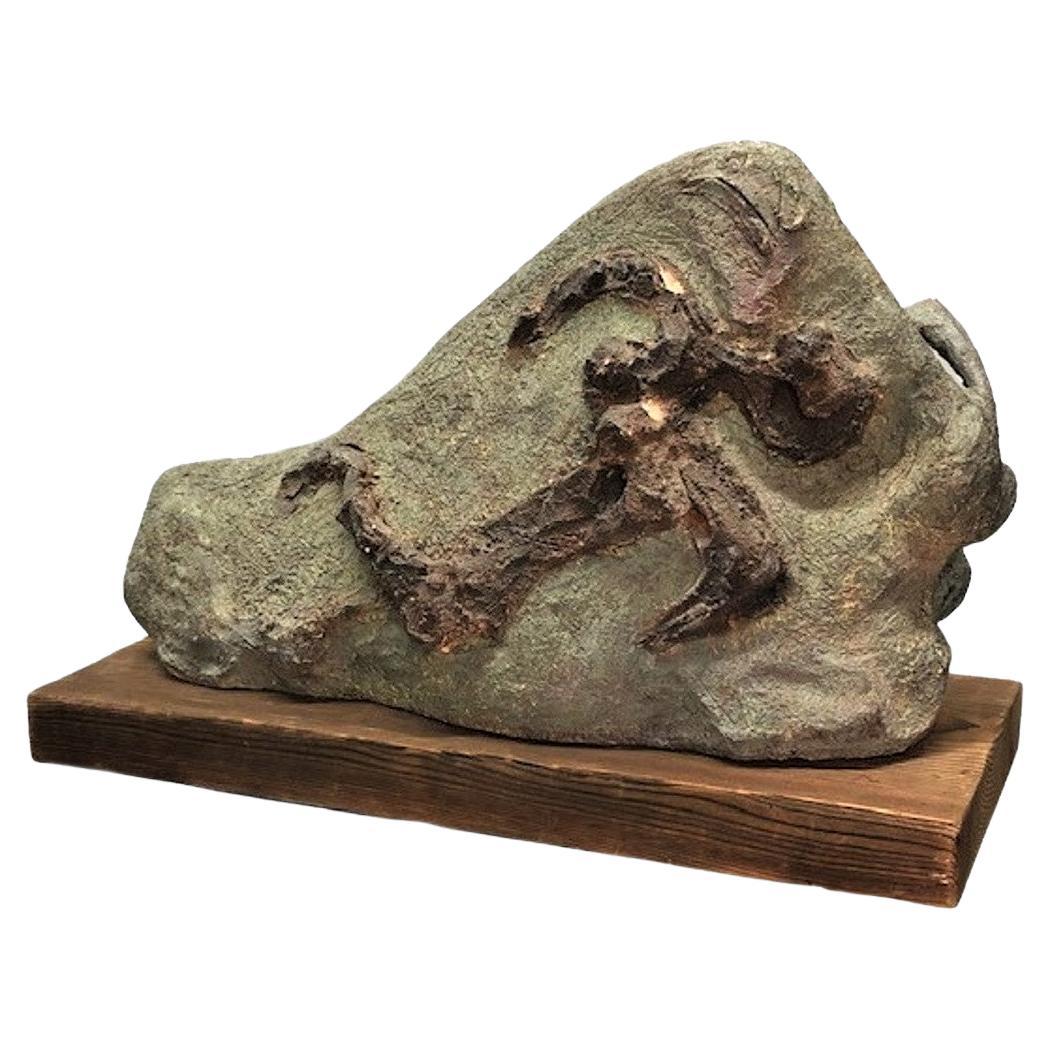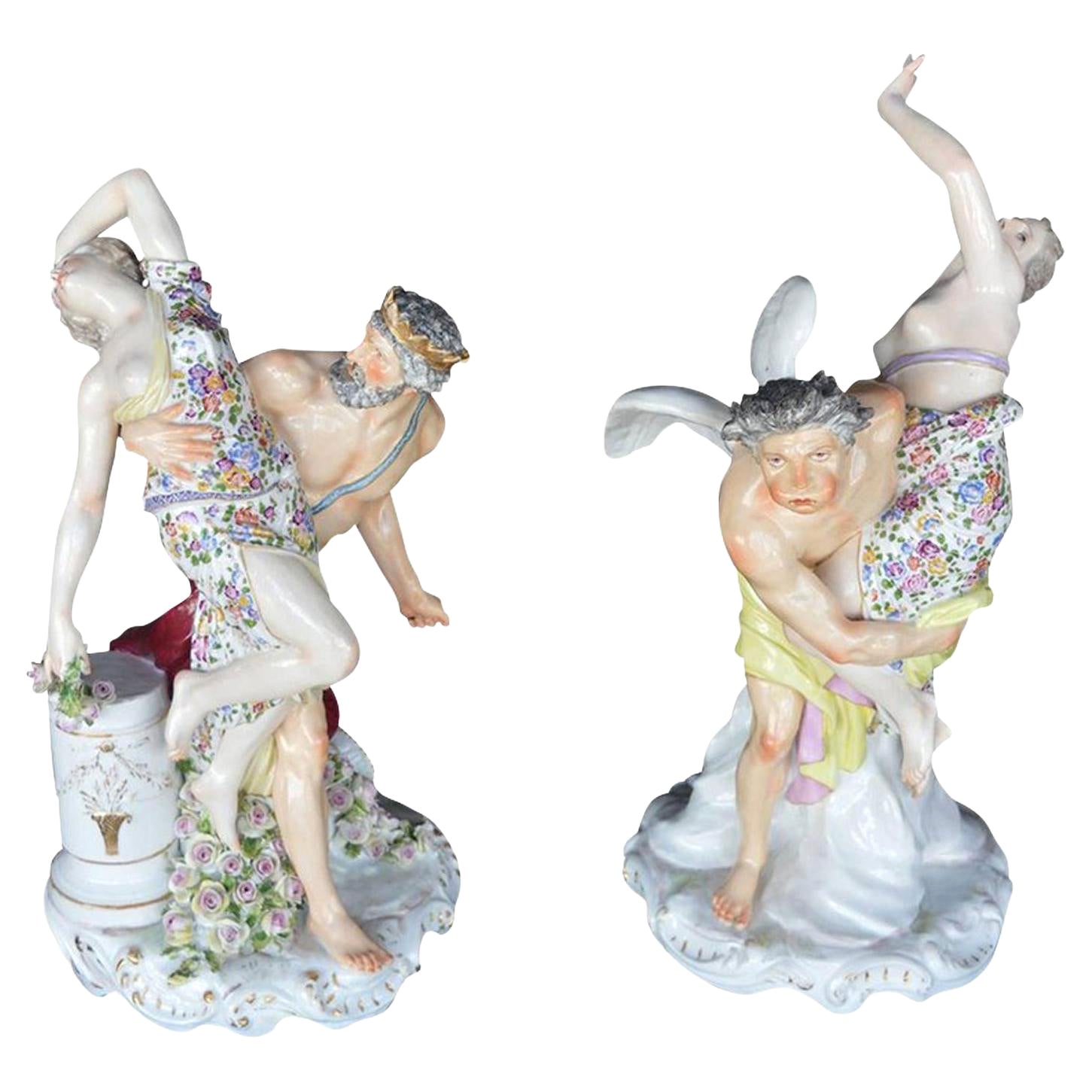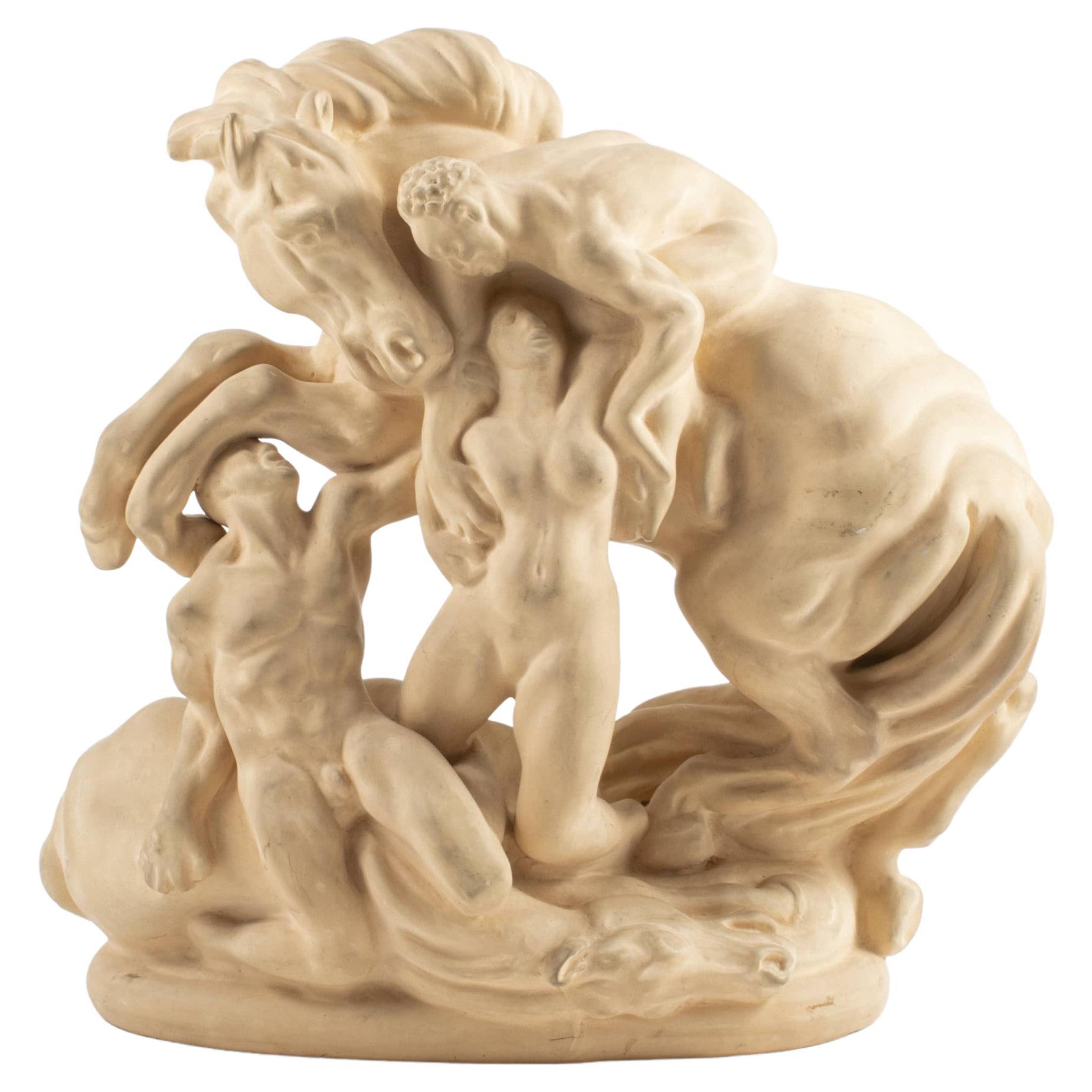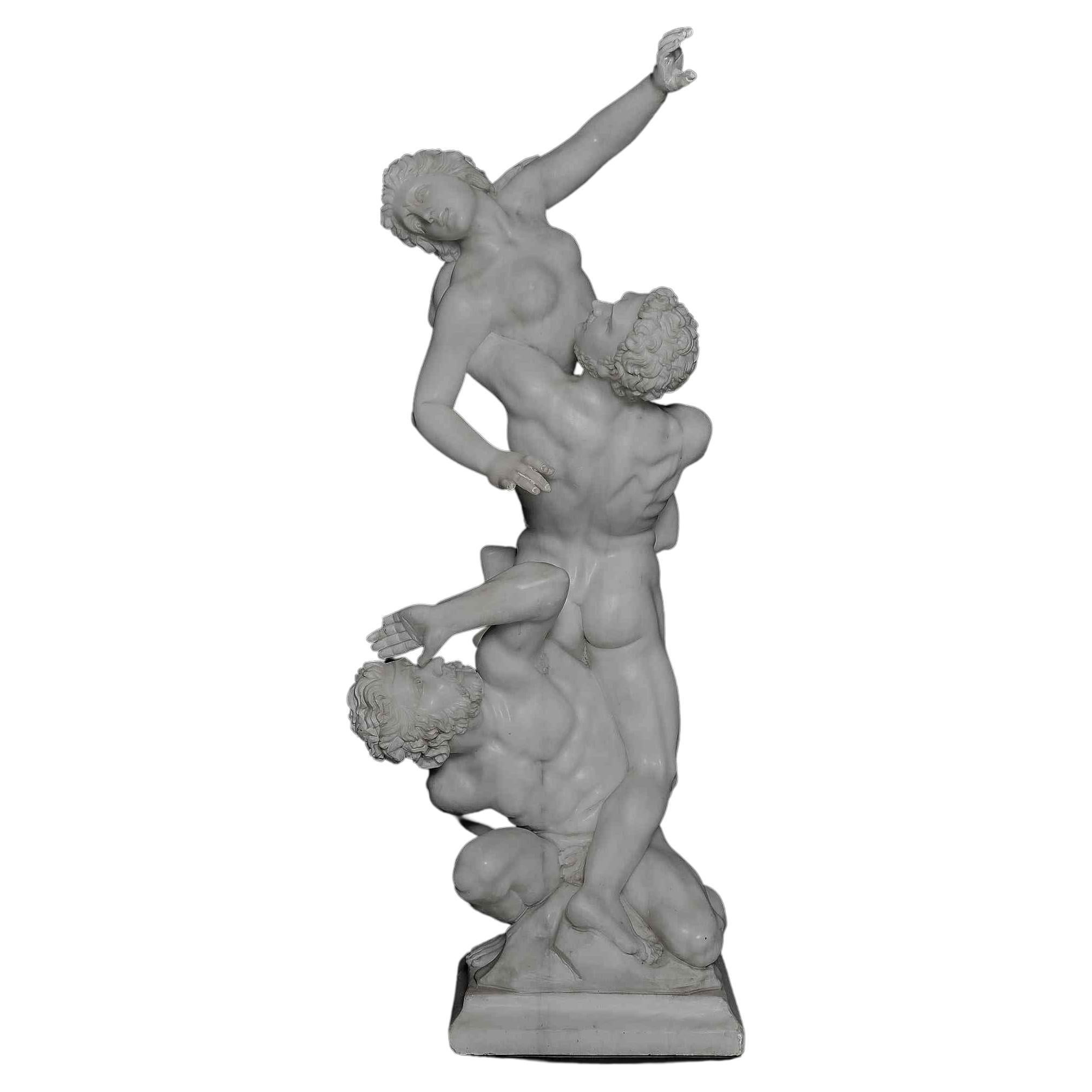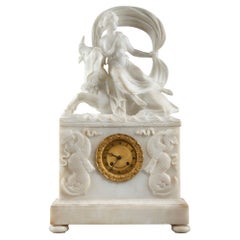
The abduction of Europa
View Similar Items
1 of 8
The abduction of Europa
About the Item
- Creator:Hermann Haase-Ilsenburg (Sculptor)
- Dimensions:Height: 23.43 in (59.52 cm)Width: 15.35 in (38.99 cm)Depth: 7.48 in (19 cm)
- Materials and Techniques:Bronze,Patinated
- Place of Origin:
- Period:
- Date of Manufacture:Before 1904
- Condition:
- Seller Location:Brussels & Antwerp, BE
- Reference Number:1stDibs: 1409249516175
You May Also Like
- Abduction of Europa by Hermann Haase-IlsenburgBy Hermann Haase-IlsenburgLocated in New Orleans, LAA poignant work of extraordinary artistry, this bronze figure captures the mythical tale of Europa, the beautiful Phoenician princess who was kidnapped by the king of the Olympian go...Category
20th Century German Art Nouveau Animal Sculptures
MaterialsBronze
- Grand Neapolitan Bronze Depicting the Abduction of Europa by Vincenzo CinqueLocated in Benington, HertsExceptional Grand Neapolitan Bronze Depicting the Abduction of Europa by Vincenzo Cinque. Italian Naples - Circa 1900 This wonderfully cast large scale bronze has retained an e...Category
Antique Early 1900s Italian Figurative Sculptures
MaterialsBronze
- Alabaster Clock, "The abduction of Europa"Located in Paris, FRRare alabaster clock representing "The abduction of Europa" by Zeus metamorphosed into a bull. Europa, dressed in an antique tunic revealing a breast, is ...Category
Antique 1830s French Restauration Table Clocks and Desk Clocks
MaterialsAlabaster, Bronze
- Stanley Stangren, Abduction of Europa, Modernist Terracotta Sculpture, ca. 1950By Stanley R. StangrenLocated in New York, NYDimensions Total height: 12.5 inches Width: 19 inches Depth: 7.5 inches Base height: 1.5 inches DETAILS Unsigned, original wood base. CONDITION Excellent vintage condition, wear consistent with age and use. Stanley R. Stangren (American, 1928–2014) was an outstanding American jeweler, artist, sculptor and ceramist, residing in New York City. He worked in different styles and in different materials, including oils, watercolor, ceramic and stone sculptures; and fine jewelry. Stangren’s painting styles varied tremendously – from complete abstract works to Holocaust themes in the style of Georges Rouault and Hieronymus Bosch to portraits in the style of Moses and Raphael Soyer. He was also a passionate lover of the performing arts, and, as a young man, spent time studying dance at both the School of American Ballet and with Martha Graham. Although he worked with dance pioneers like Ms. Graham, Anna Sokolow and Charles Weidman, an injury prevented him from pursuing dance as a career. But he found other outlets for his artistic pursuits. In his youth, Stangrem attended the Brooklyn Museum School of Art, and graduated from the High School of Music and Art in New York City. He later studied at the Boston Museum of Fine Arts, the Art Students League, Bard Colledge and in Europe. Stangren studied jewelry design in Europe, attending Staatlische Kunst Werkschule in Pforzheim, Germany and Kunstgewerbeschule der Stadt in Zurich, Switzerland. His jewelry and designs were received with great success. His combination of precious and semi-precious stones, high-karat gold and sterling silver, and exotic materials executed with outstanding workmanship in the abstract modernist style gave a unique aspect to his designs, the metalwork usually electroformed, cast, or fused in varying textures. After returning to New York in the later 1950’s, Stangren opened and maintained a ceramic business in Trenton, New Jersey. Very few pieces of his work remain from this period. When he retired from the ceramics business, he spent much of his time enjoying the arts. He frequently attended Juilliard performances, including most of the opera and drama presentations at the School, and was especially fond of the dance concerts. The last 40 years of his life, he taught painting in the New York area and worked with Metropolitan Museum of Arts in developing annuities, for future acquisitions. In addition, Stangren left annuities for MoMa in support of educational programs and left, in his will or through his executors, art supplies for the Harlem School of Art and benefits for the Urban Assembly organization. Mr. Stangren's love for the arts and for the performances he was seeing at Juilliard inspired him to take his participation a step further and to establish charitable gift annuities with the School. "I realized what Juilliard offered me, being a passionate music lover, and I decided to give something back" he said. "What Juilliard achieves is remarkable. When I think of the prominent actors, dancers and musicians that have been educated there, I am always staggered. It is deeply financially satisfying to be able to give back to the School, while benefitting from it at the same time." The Juilliard School is not the only organization that Stanley Stangren...Category
Vintage 1950s American Mid-Century Modern Abstract Sculptures
MaterialsTerracotta
- After Giambologna: The Abduction of a Sabine WomanBy GiambolognaLocated in Montreal, QCThis fine 19th century copy of the famous group is in a sumptuous Serpentine marble. The Sabine man crouches in submissive pose, whilst the Roman carries off the writhing woman. It is well-presented on the original matching plinth and pedestal . This perhaps forms part of someone's Grand Tour along with mosaics and bronzes after the antique...Category
Antique 1850s Italian Renaissance Figurative Sculptures
MaterialsMarble, Serpentine
- Set of Two Porcelain Sculptures of the Abduction of the Sabine WomenBy Meissen PorcelainLocated in Los Angeles, CASet of two porcelain figurines in the style of Meissen depicting the "Abduction of the Sabine Women"a historic episode from Roman mythology that is traditionally attributed to Romulu...Category
Antique Early 1900s Figurative Sculptures
MaterialsPorcelain

